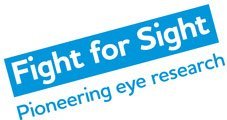Researchers at the City University of London published a study which reveals that one of the main causes of blindness on an international level could be detected by tracking how our eyes work in front of a television. The study was funded by the Fight for Sight charity.
Glaucoma is difficult to detect at an early stage
Researchers have found out they could detect eye diseases such as glaucoma by establishing a cartography of eye movements while watching television. In the UK, it is estimated that around 500 000 people suffer from undiagnosed glaucoma. The results of the study from the City University of London could help diagnosing this disease and anticipating its treatment before permanent damage appears.
Glaucoma affect 65 million people worldwide. It consists in a series of eye diseases which, on the long term, can cause irreversible damage to the optical nerve that links the retina to the brain. People suffering from glaucoma gradually lose sight to the point of blindness.
It is still difficult to diagnose glaucoma when it first appears since many affected people do not realise they are losing their peripheral view. When compensation mechanisms are no longer efficient enough and the affected patient notices there’s a problem, the damage is often irreversible and can lead to visual impairment, if not blindness.

A cartography of eye movements to detect diseases
 The study was conducted by a team of researchers led by professor David Crabb, Dr. Nicholas Smith and Dr. Haogang Zhu. They compared two groups of 32 elderly people with good sight and 44 patients affected by glaucoma. The stage of the disease was measured thanks to a clinical diagnosis.
The study was conducted by a team of researchers led by professor David Crabb, Dr. Nicholas Smith and Dr. Haogang Zhu. They compared two groups of 32 elderly people with good sight and 44 patients affected by glaucoma. The stage of the disease was measured thanks to a clinical diagnosis.
The two groups watched several TV programs on a computer screen while the movement of their eyes was tracked. Particular attention was paid to the direction in which they were looking. This data allowed the team to build detailled cartographies to diagnose glaucoma. Results were published in the Frontiers in Aging Neuroscience journal.
David Crabb is a professor in statistics and conducts research in ocular health at the City University of London. He declared: “These are preliminary results but we found out how to identify patients affected by glaucoma by observing how people watch television. This could have a serious impact on the detection and monitoring of a disease that is the cause of blindness in 1 out of 10 cases as well as about 1 million appointments to the NHS in the United Kingdom. Once the damage is there, it is irreversible: an early diagnosis is necessary to identify this disease as it will become more and more frequent as our population gets older.”
Meanwhile, Dr. Dolores M Conroy who leads research at Fight for Sight, declared:
“One of the six long-term objectives of Fight for Sight is to allow an early detection of diseases such as glaucoma. The treatment and diagnosis of the disease at an early stage could prevent people from going blind. We are therefore delighted that this study, which aims to prove a concept on eye movements, opens up to the development of a new clinical test for glaucoma. Moreover, it tackles a priority goal of research on glaucoma for Sight Loss and Vision Priority Setting Partnership: that is, monitoring the disease with the patients, their relatives, their carers, and ocular health specialists.”
Published by the Editorial Staff on
